As I arrived back into Budapest at midnight I had decided to spend the night in an airport hotel-in fact THE airport hotel as there is only the one at Budapest airport! Rather oddly I was offered a huge (20%) discount for paying in cash in Euros, as opposed to in Hungarian with my card; I’m not sure how the economics of that work out. This is the only hotel I’ve stayed in with its own dental implant clinic(Dentistry is one of Hungary’s biggest exports).
On reclaiming the van in the morning ,all was well. I seemed to have brought the British weather with me as it was 12 degrees and drizzling with rain, very different to the 28 degrees I left behind 10 days ago. The only issue is that the carpet glue which I used to fix some leatherette covering to the walls has not coped with what must have been 40 degree heat inside the van, and it is peeling at the edges. Some dabs of epoxy will hold it till I get home.
After replenishing the larder in a Tesco hypermarket I set off for what should be my last day in Hungary. I headed north of Budapest to the Danube bend,where it changes direction from west-east ,to north-south.
On reclaiming the van in the morning ,all was well. I seemed to have brought the British weather with me as it was 12 degrees and drizzling with rain, very different to the 28 degrees I left behind 10 days ago. The only issue is that the carpet glue which I used to fix some leatherette covering to the walls has not coped with what must have been 40 degree heat inside the van, and it is peeling at the edges. Some dabs of epoxy will hold it till I get home.
After replenishing the larder in a Tesco hypermarket I set off for what should be my last day in Hungary. I headed north of Budapest to the Danube bend,where it changes direction from west-east ,to north-south.
The drive along the river was very scenic,with dense chestnut woodland going right to the water’s edge,and the same on the Slovakian bank,to the north.I stopped at the small town of Visegrad,which was the ancient capital of Hungary in the 14th century.There are two ruins, firstly on the hill overlooking the town, the medieval castle,and also down at river level are the ruins of a Renaissance summer palace built by King Mattias in the 15th century. With a nod to a similar summit meeting centuries ago,a meeting here in the 1990's founded the Visegrad group, comprising Hungary,Poland,Slovakia and the Czech Republic, a forum to aid mutual support between these 4 nations relatively new to the EU.
This whole area was ravaged by the Turks in the 16th century.There didn’t seem much left of the Renaissance palace so I left that alone, but instead took advantage of the cool weather and fresh legs to climb the 300 metres up the hill to the castle.There was not much more up there than a ruin,together with some rather basic medieval- themed exhibits aimed at schoolchildren, but the views of the Danube were superb.
This whole area was ravaged by the Turks in the 16th century.There didn’t seem much left of the Renaissance palace so I left that alone, but instead took advantage of the cool weather and fresh legs to climb the 300 metres up the hill to the castle.There was not much more up there than a ruin,together with some rather basic medieval- themed exhibits aimed at schoolchildren, but the views of the Danube were superb.
30km further up the river lay my final destination of the day, Esztergom. This was another ancient capital of Hungary ,from the 10th to the 13th centuries,but today remains a much more interesting place than Visegrad .I had particularly wanted to fit in a visit here not only because of the historical interest but also because,more importantly to me ,it plays a big role as a break point between Patrick Leigh Fermor’s books “A Time of Gifts”, and “Between the Woods and the Water”(see my home page).
His first book ends with him standing on the Czechoslovakian side of the river on Easter day 1934 watching colourful preparations for the Easter service across the river in Esztergom ,and the second book starts off with him crossing over to Hungary to those celebrations. This break point has been noted and reiterated by various more modern travellers following in his footsteps, and the irony was not lost on me that I am now at the junction between the second and third stages of my own journey, and about to cross the same bridge, albeit in the opposite direction.
The bridge he crossed is the Maria Valeria bridge(named for an archduchess of Austria) but this was in fact blown up by the retreating Germans in 1944.Prevarications between the respective communist regimes in Czechoslovakia and Hungary meant that it was not rebuilt till 2001(and then mostly funded by the EU as a part of preparatory grants for the two countries joining the EU).Today I strolled across the bridge to the Slovakian side and the town of Sturovo ,having been told that 70% of the population are still ethnic Hungarian ; it is not a particularly attractive place compared to Esztergom,though. Walking back ,I was able to see the same view of Esztergom that Leigh-Fermor would have seen as he approached in 1934. Esztergom’s most striking feature is the huge cathedral, or basilica, built in the mid-19th century and which is the largest church in Hungary, and the seat of the head of the Hungarian Catholic church.It sits up on the historic castle hill, where next to it there are also remains of the royal palace and castle from the medieval period.
Leigh-Fermor had approached Esztergom from the Slovakian bank of the Danube. ".... far away on the other bank I could see my destination; it had been growing steadily in size since my first glimpse that morning. A cliff loomed over a long sweep of the river and on this ledge was perched a white fane that resembled St Peter's in Rome.A light circle of pillars lifted a gleaming dome into the sky.It was dramatic, mysterious ,as improbable as a mirage and unmistakeable as a landmark for many miles across the desert of liquid and solid. The basilica of Esztergom...."
Turning up at the basilica and the palace museum late in the day, I again managed to end up with a personal guided tour. Much of the palace has been reconstructed, largely from excavated ruins (again with EU funding) and now a series of rooms with traces of restored frescos exist. The most extensive frescoes are thought to bear a close resemblance to Botticelli’s work, and there is fierce debate as to whether he could be the painter.(I get the impression that this aspect has been talked up by the authorities, as opposed to the experts, to aid the acquisition of funding).
See jekely.blogspot.com/2011/03/botticelli-in-esztergom.html for discussion about this.
Further debate concerns whether the palace was actually destroyed by the Turks, or by the Christians in the process of re-taking it from the Turks.
His first book ends with him standing on the Czechoslovakian side of the river on Easter day 1934 watching colourful preparations for the Easter service across the river in Esztergom ,and the second book starts off with him crossing over to Hungary to those celebrations. This break point has been noted and reiterated by various more modern travellers following in his footsteps, and the irony was not lost on me that I am now at the junction between the second and third stages of my own journey, and about to cross the same bridge, albeit in the opposite direction.
The bridge he crossed is the Maria Valeria bridge(named for an archduchess of Austria) but this was in fact blown up by the retreating Germans in 1944.Prevarications between the respective communist regimes in Czechoslovakia and Hungary meant that it was not rebuilt till 2001(and then mostly funded by the EU as a part of preparatory grants for the two countries joining the EU).Today I strolled across the bridge to the Slovakian side and the town of Sturovo ,having been told that 70% of the population are still ethnic Hungarian ; it is not a particularly attractive place compared to Esztergom,though. Walking back ,I was able to see the same view of Esztergom that Leigh-Fermor would have seen as he approached in 1934. Esztergom’s most striking feature is the huge cathedral, or basilica, built in the mid-19th century and which is the largest church in Hungary, and the seat of the head of the Hungarian Catholic church.It sits up on the historic castle hill, where next to it there are also remains of the royal palace and castle from the medieval period.
Leigh-Fermor had approached Esztergom from the Slovakian bank of the Danube. ".... far away on the other bank I could see my destination; it had been growing steadily in size since my first glimpse that morning. A cliff loomed over a long sweep of the river and on this ledge was perched a white fane that resembled St Peter's in Rome.A light circle of pillars lifted a gleaming dome into the sky.It was dramatic, mysterious ,as improbable as a mirage and unmistakeable as a landmark for many miles across the desert of liquid and solid. The basilica of Esztergom...."
Turning up at the basilica and the palace museum late in the day, I again managed to end up with a personal guided tour. Much of the palace has been reconstructed, largely from excavated ruins (again with EU funding) and now a series of rooms with traces of restored frescos exist. The most extensive frescoes are thought to bear a close resemblance to Botticelli’s work, and there is fierce debate as to whether he could be the painter.(I get the impression that this aspect has been talked up by the authorities, as opposed to the experts, to aid the acquisition of funding).
See jekely.blogspot.com/2011/03/botticelli-in-esztergom.html for discussion about this.
Further debate concerns whether the palace was actually destroyed by the Turks, or by the Christians in the process of re-taking it from the Turks.
On walking back to the campsite along the river I came across the tail end of a training session at Esztergom Rugby Club.I wasn’t aware that rugby featured in Hungary, but the Esztergom team is in their top flight.The riverside walk is very pleasant, peaceful ,with a tree lined cycle track,and lawns, and views of occasional monolithic river cruisers gliding silently by.This is all very reminiscent of some of the lower reaches of the Seine,around Rouen,and Les Andelys ,where there are similar peaceful tree lined stretches with ruined medieval castles.

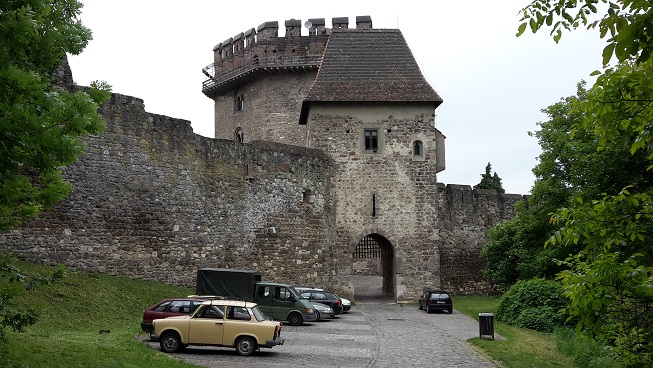
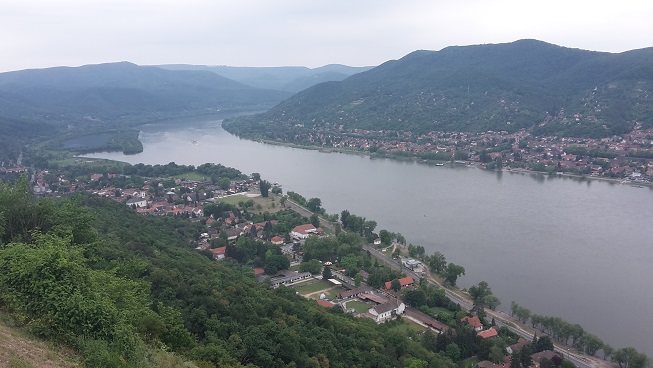
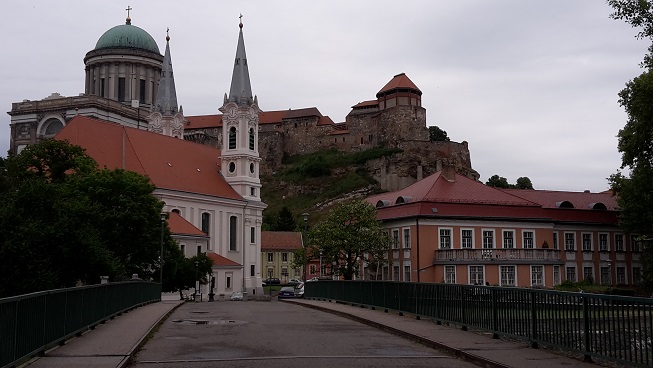
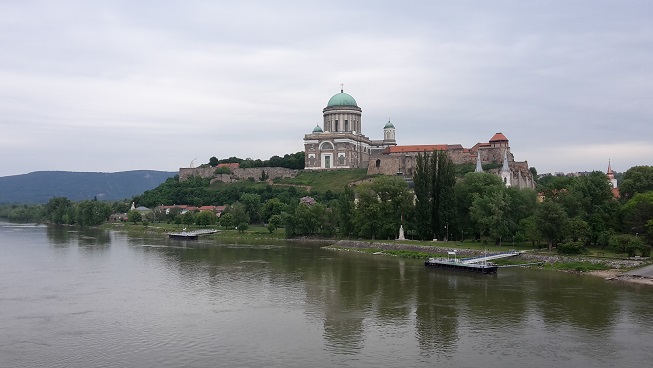
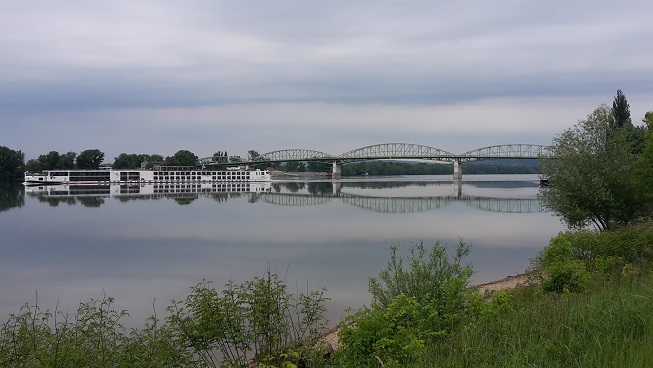
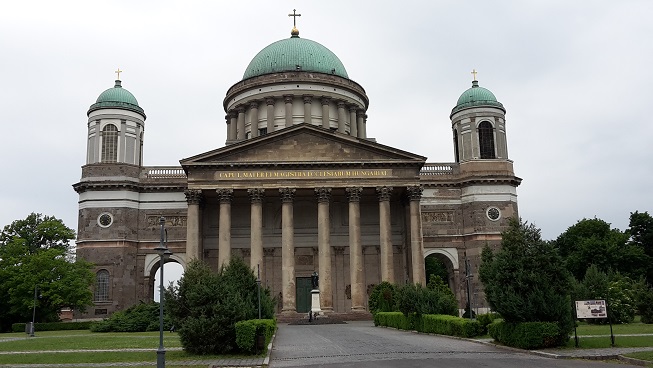
 RSS Feed
RSS Feed